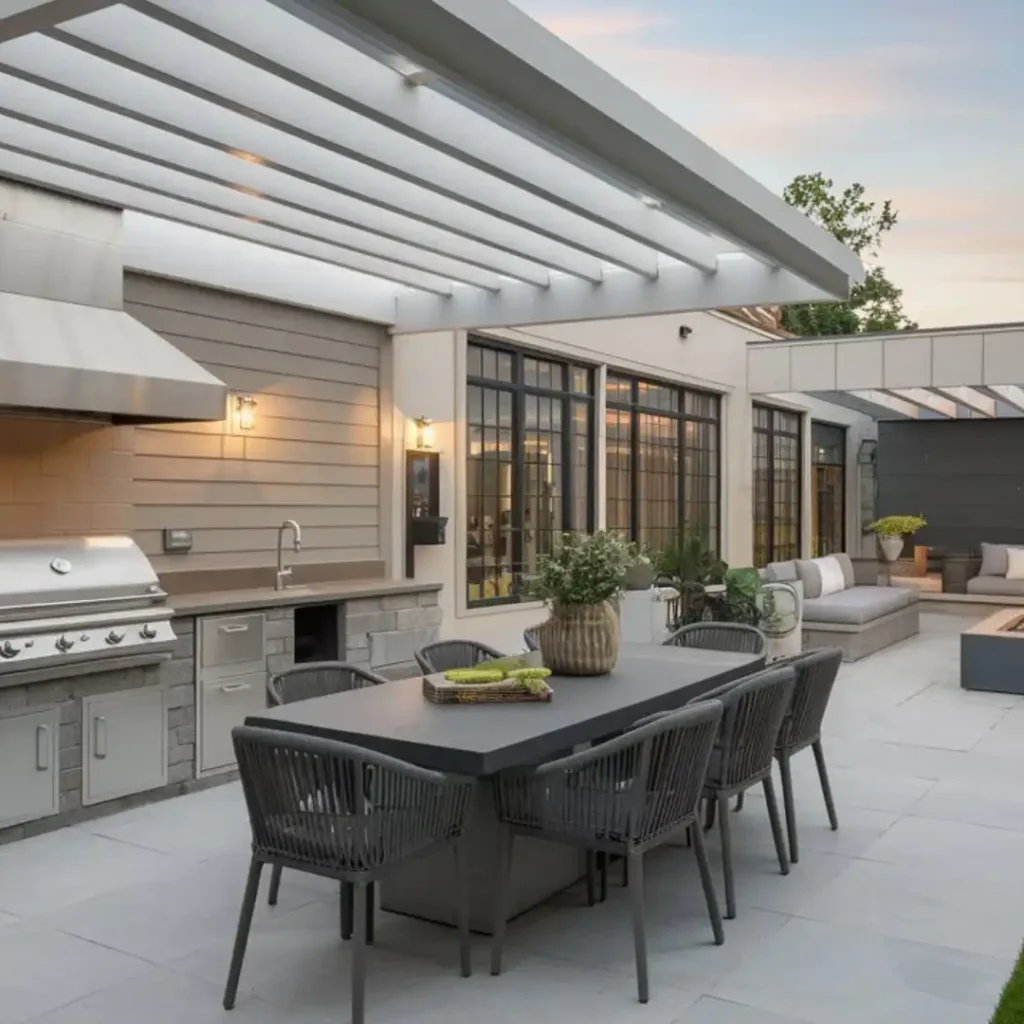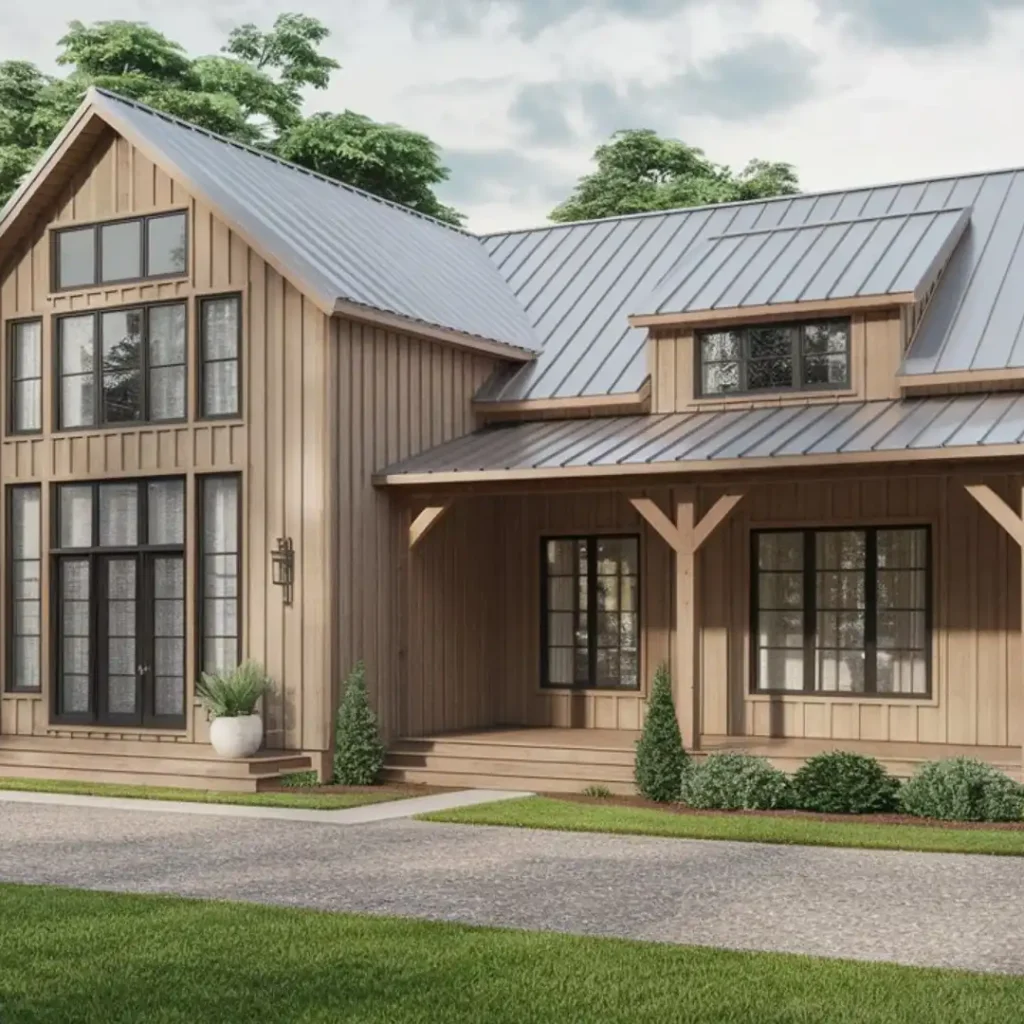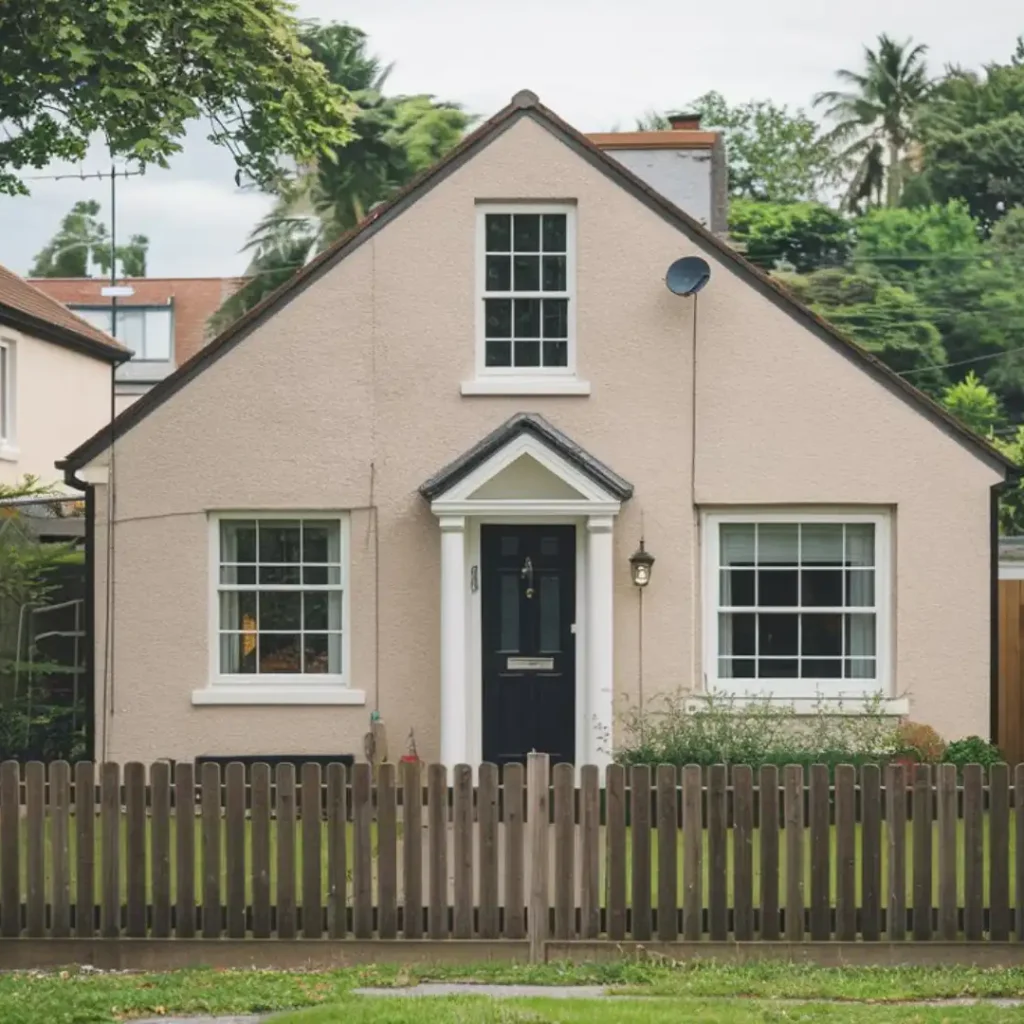- Sustainable Landscapes: The Core of 2025 Garden Design
- Smart Gardens: Technology Meets Nature
- Vertical Gardens and Green Walls: Maximizing Space in 2025 Garden Design
- Biophilic Design: Connecting with Nature in 2025 Garden Design
- Climate-Resilient Gardens: Preparing for the Future
- Outdoor Living Spaces: Expanding the Home Outdoors
- Wildlife-Friendly Gardens: Promoting Biodiversity in 2025 Garden Design
- Wellness Gardens: Designing Spaces for Health and Well-being
- Multi-Seasonal Gardens: Enjoy Your Garden All Year Round
- Eco-Friendly Garden Furniture: Sustainability in Every Detail
- Water Features: Tranquility and Sustainability in 2025 Garden Design
- Edible Gardens: Grow Your Own Food in 2025
- Minimalist Garden Design: Less is More
- Regenerative Gardens: Giving Back to the Earth
- Natural Play Areas: Family-Friendly Garden Design for 2025
- Garden Art and Sculptural Elements: Personalizing 2025 Garden Design
- Conclusion
The world of 2025 garden design is poised to change how we think about outdoor spaces, combining innovative ideas, sustainable practices, and technology to create beautiful environments that are also eco-friendly and practical. By 2025, gardens will reflect a balance of nature, tech, and human touch. This will be due to our growing awareness of our environmental impact and love of nature. These design trends inspire every type of garden. They suit both urban dwellers with limited space and homeowners with vast grounds.
In this article, we will dive into the hottest 2025 garden design trends, providing insight into how you can transform your outdoor space into a stunning, sustainable, and relaxing oasis. From embracing native plants to integrating smart garden systems, here’s what to expect in the gardens of tomorrow.
Sustainable Landscapes: The Core of 2025 Garden Design
As we move towards a greener future, sustainability is at the forefront of 2025 garden design. More than ever, gardeners and designers are prioritizing eco-conscious practices to create gardens that work in harmony with the environment rather than against it.
Native Plants and Water-Wise Gardening
One of the key elements in sustainable garden design is the use of native plants. Native plants are naturally adapted to local climates and soil conditions, which means they require less water, fertilizer, and maintenance. These plants also support local wildlife, providing habitats and food sources for pollinators like bees and butterflies. 2025 garden design emphasizes the importance of creating biodiverse spaces that contribute to the ecosystem’s health.
In addition to native planting, water conservation will be a critical consideration in 2025 garden design. Climate change is altering rainfall and water supply. Gardens will use drought-tolerant plants and efficient irrigation. This includes drip systems and smart controllers to save water.
Composting and Organic Gardening
Reducing waste and chemical inputs is another significant trend in 2025 garden design. Home composting will play a central role in minimizing organic waste while improving soil health. Gardens designed with organic principles will avoid synthetic pesticides and fertilizers. They will use natural solutions to keep plants healthy and thriving.
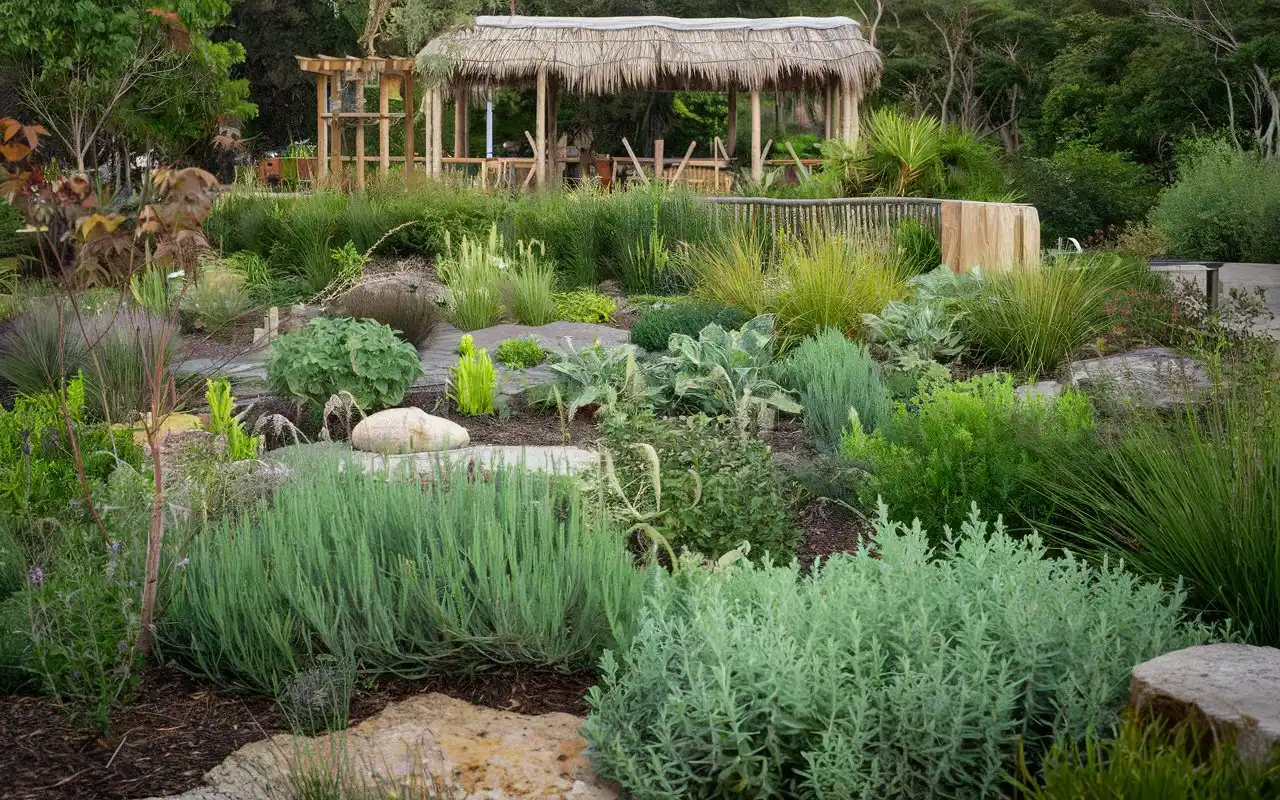
Smart Gardens: Technology Meets Nature
The rise of smart technology has transformed many aspects of modern life, and gardening is no exception. 2025 garden design embraces technology to simplify garden care and make it more efficient, leaving gardeners with more time to enjoy their outdoor spaces.
Automated Irrigation Systems
One of the most significant innovations in 2025 garden design is the use of automated irrigation systems. These systems use sensors and real-time data to monitor soil moisture and weather. They adjust watering schedules based on this data. They make sure plants receive the proper quantity of water. They also prevent over-watering, which causes diseases and wastes water.
Robotic Lawn Mowers and Garden Maintenance Tools
By 2025, robotic lawnmowers are expected to become a common sight in gardens for those who want a well-manicured lawn without putting in the work. These mowers can be programmed to trim grass automatically. They can navigate around obstacles and return to their charging stations when done. Other smart tools will become staples in the tech-savvy garden. These include self-watering planters and plant health monitors. They will allow for easy, hands-off garden maintenance.
Smart Lighting Systems
Outdoor lighting has always been an essential component of garden design, and in 2025, it will get even smarter. Smartphone-controlled lighting systems will let homeowners easily adjust their garden’s ambiance. Solar-powered LED lights will remain popular. They are energy-efficient and eco-friendly for outdoor lighting.
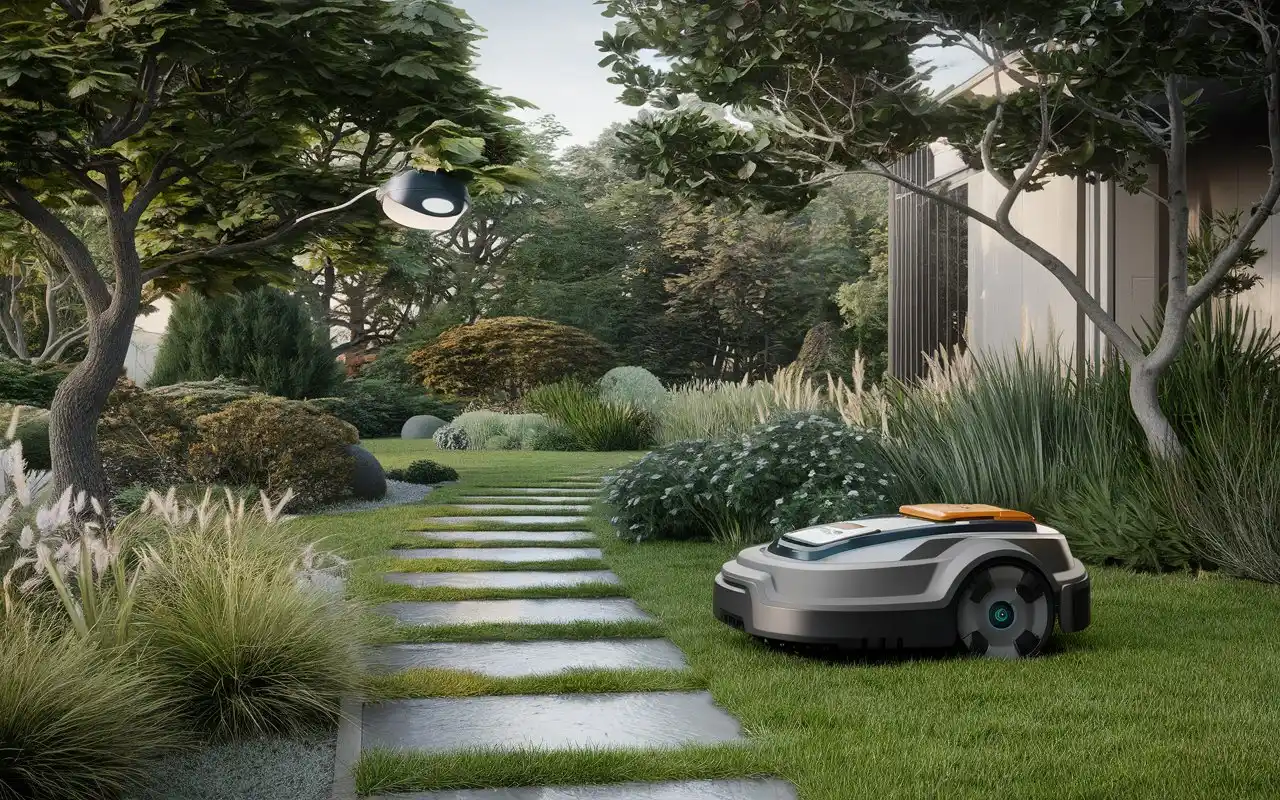
Vertical Gardens and Green Walls: Maximizing Space in 2025 Garden Design
As urbanization rises and space shrinks, vertical gardens are a great way to add greenery to small outdoor areas. 2025 garden design will see a rise in the use of vertical gardens and green walls, allowing urban dwellers to enjoy lush, green environments even in the most compact spaces.
Living Walls for Urban Environments
Green walls, also known as living walls, are vertical structures covered in plants. These installations can be used on the exterior or interior of buildings, transforming blank walls into vibrant, living canvases. In 2025 garden design, living walls will be valued for their beauty and their benefits. They will improve air quality, reduce noise, and provide insulation.
Edible Vertical Gardens
For those with limited space, edible vertical gardens will be a popular option. These gardens use vertical systems to grow herbs, veggies, and fruits in small spaces, like balconies, patios, or small courtyards. Edible vertical gardens allow homeowners to enjoy the benefits of homegrown produce without needing a large plot of land. With more people becoming interested in sustainable food sources, this trend is set to thrive in 2025.
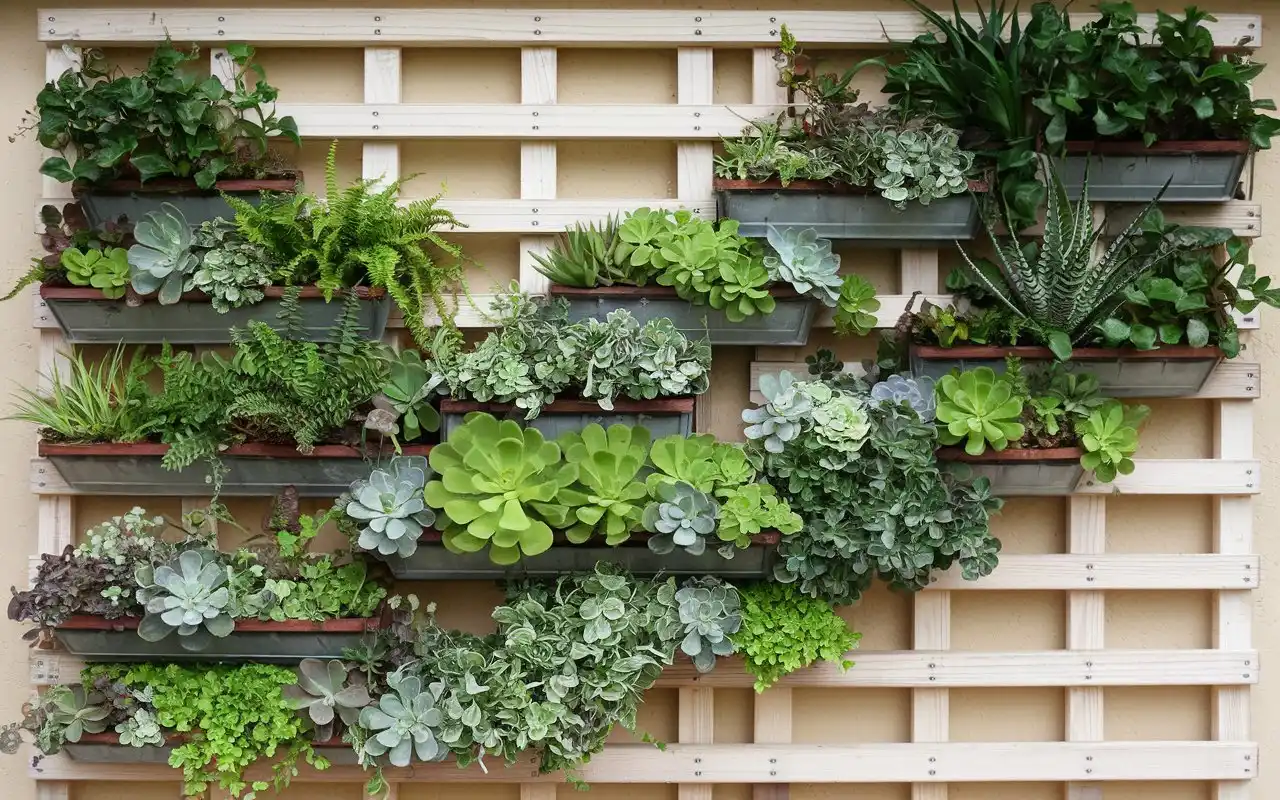
Biophilic Design: Connecting with Nature in 2025 Garden Design
Biophilic design is an approach that seeks to strengthen the connection between humans and nature. In 2025 garden design, we will use biophilic principles to create beautiful spaces. They will promote well-being by fostering a deeper connection to nature.
Sensory Gardens
Sensory gardens, designed to stimulate the senses through a variety of plants, textures, and sounds, will become more common in 2025 garden design. These gardens are designed to engage sight, smell, touch, and even hearing, creating a fully immersive experience. To create relaxing, mindful gardens, we will add fragrant flowers, textured leaves, water features, and bird feeders.
Natural Materials and Organic Shapes
In keeping with biophilic design, gardens in 2025 will favor natural materials such as wood, stone, and clay, and organic shapes that mimic the curves and flow of the natural world. We will design hardscaping elements like pathways, seating areas, and pergolas. They will integrate seamlessly with the landscape, creating a cohesive environment.
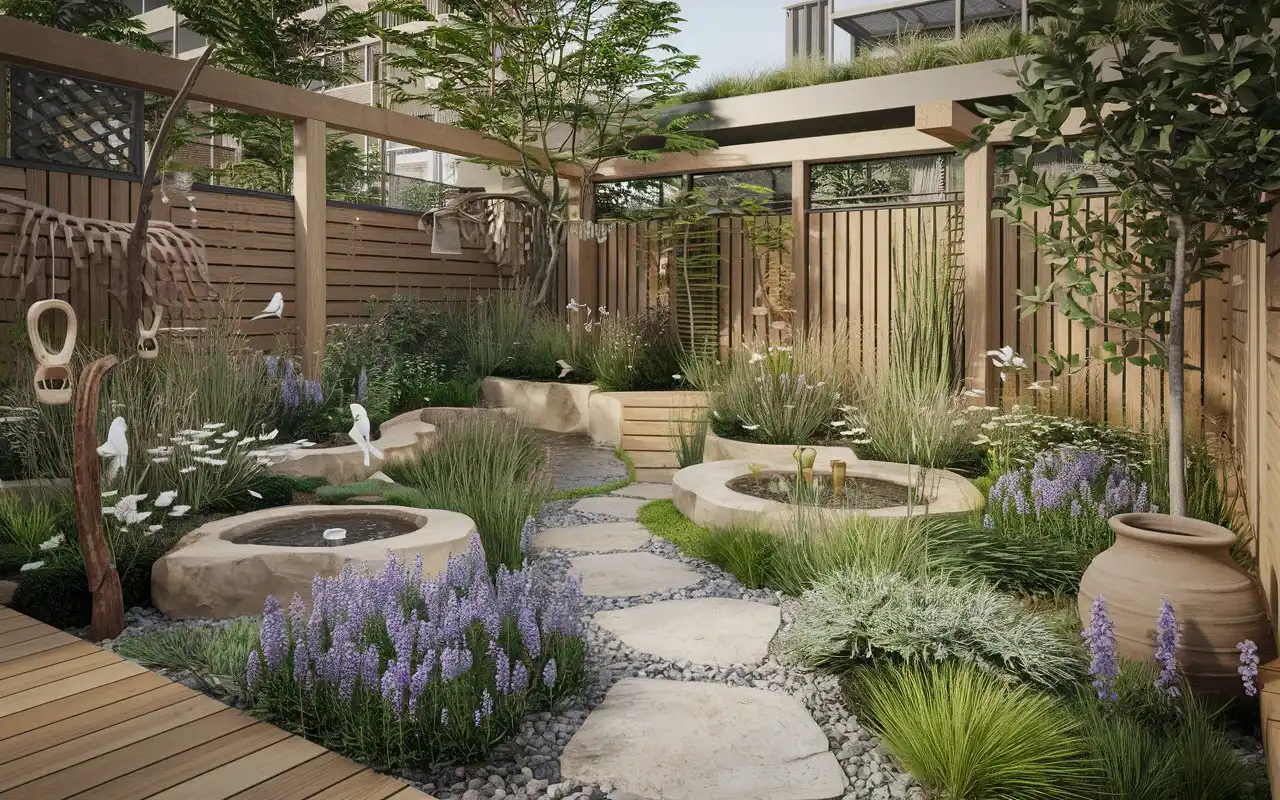
Climate-Resilient Gardens: Preparing for the Future
With the increasing unpredictability of climate patterns, 2025 garden design will prioritize resilience and adaptability. With extreme temperatures, erratic rain, and stronger storms, gardeners face challenges. Designs will aim to create landscapes that can endure these stresses.
Stormwater Management
In response to more frequent and intense storms, gardens in 2025 will be designed with effective stormwater management solutions. We will use permeable paving, rain gardens, and bioswales. They will capture and filter stormwater. This will prevent runoff and erosion. It will also reduce the strain on urban drainage systems.
Heat-Tolerant Planting
With rising temperatures, gardens will need to incorporate plants that can withstand prolonged heat and dry conditions. In 2025 garden design, heat-tolerant plants, like succulents and ornamental grasses, will be vital in low-maintenance gardens. They include drought-resistant perennials. These plants will not only thrive in challenging conditions but also add texture and visual interest to garden spaces.
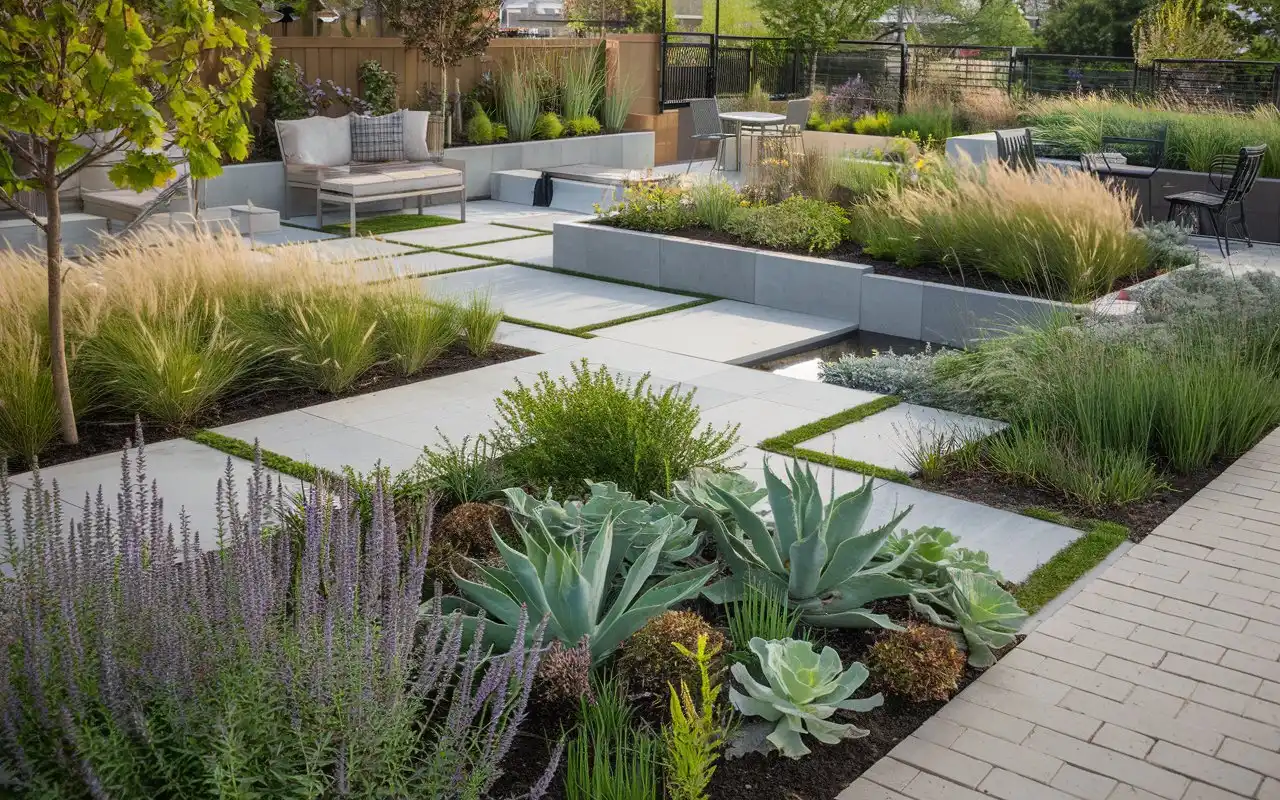
Outdoor Living Spaces: Expanding the Home Outdoors
As more people prioritize outdoor living, 2025 garden design will focus on creating functional outdoor spaces that extend the home’s living areas into the garden. These outdoor rooms will be for relaxing, entertaining, and dining. They will provide a seamless flow between indoor and outdoor living.
Outdoor Kitchens and Dining Areas
By 2025, outdoor kitchens will be more advanced. They will have built-in grills, sinks, and refrigerators. This will make it easier to entertain guests outside. Outdoor dining areas will be stylish and comfortable. They will have weather-resistant furniture, shade structures, and ambient lighting. This will create a welcoming atmosphere.
Garden Lounges and Fire Pits
For those who want to create a cozy retreat, garden lounges equipped with comfortable seating and fire pits will be a popular feature in 2025 garden design. Fire pits provide warmth and a focal point for gatherings. Outdoor lounges create a space to relax and enjoy the gardens.
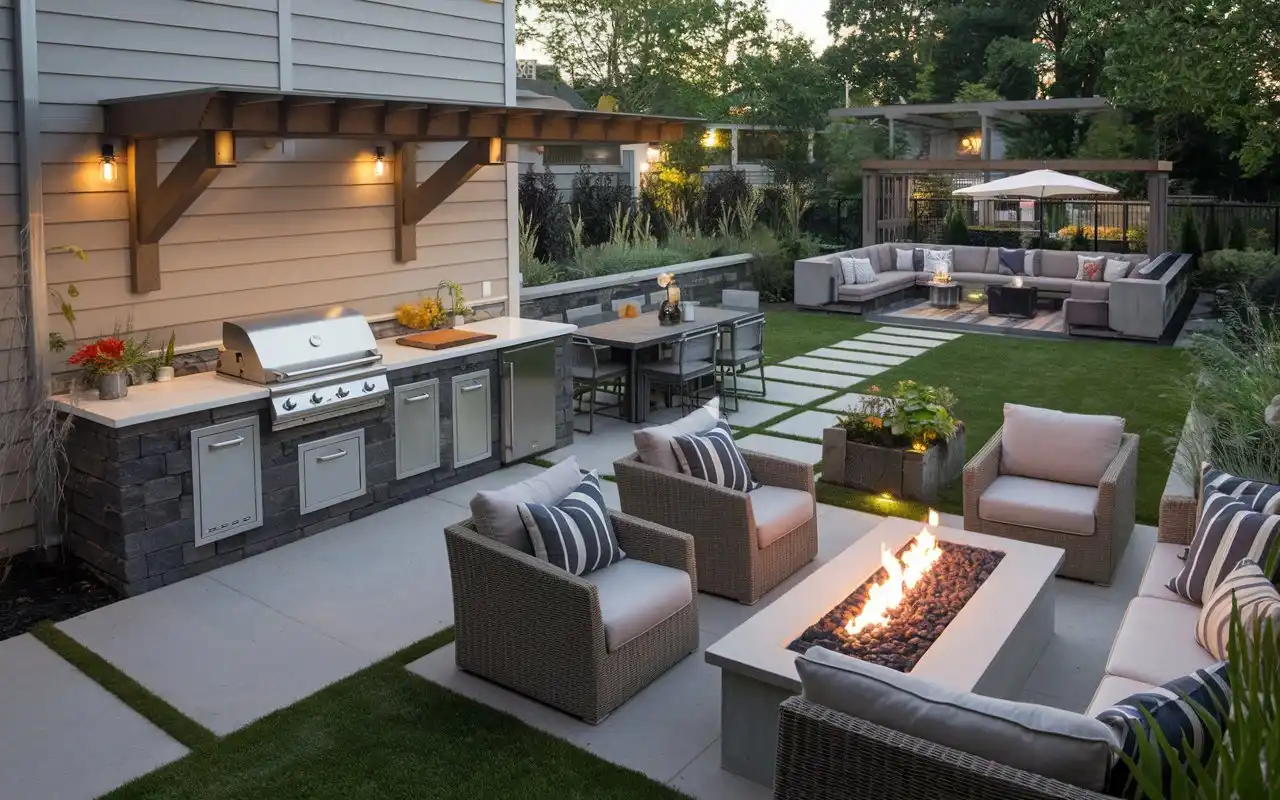
Wildlife-Friendly Gardens: Promoting Biodiversity in 2025 Garden Design
Another essential aspect of 2025 garden design is the increasing focus on creating spaces that are not just for humans but also local wildlife. As urbanization spreads, it fragments or destroys natural habitats. Gardens are now a vital refuge for many species.
Creating Pollinator Havens
Pollinators like bees, butterflies, and birds are vital to the ecosystem. But, their populations are declining due to habitat loss and pesticides. In 2025 garden design, there is a growing movement toward creating pollinator-friendly gardens that offer food, shelter, and nesting areas for these essential creatures.
To attract pollinators, gardeners will plant flowers rich in nectar and pollen, such as lavender, sunflowers, and coneflowers. Also, native plants will be encouraged. They better support local pollinators. Other features, such as bee hotels and birdbaths, will be incorporated to enhance these wildlife-friendly spaces.
Wildlife Corridors
For gardens located near natural habitats or parks, 2025 garden design will explore the concept of wildlife corridors. These are strips of native plants or connected garden patches. They allow wildlife to move safely between areas. Homeowners can help create urban ecosystems that support biodiversity. They can do this by linking private gardens to nearby green spaces with corridors.
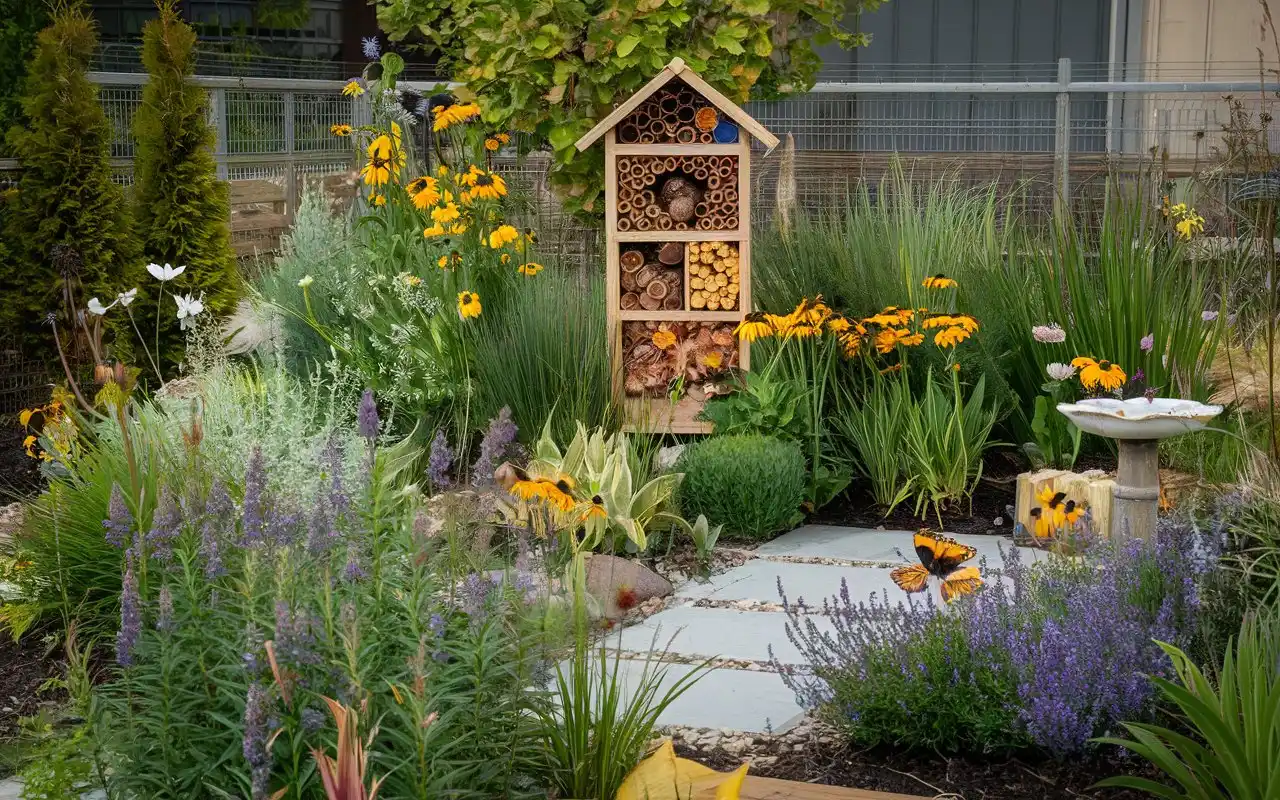
Wellness Gardens: Designing Spaces for Health and Well-being
It is well known that green spaces improve well-being. In 2025, gardens will be designed for wellness. 2025 garden design will focus on creating spaces that promote mental and physical health, offering areas for relaxation, meditation, and even exercise.
Therapeutic Gardens
Therapeutic or healing gardens will be an important trend in 2025 garden design. These gardens aim to boost well-being. They reduce stress, improve mood, and promote exercise. Therapeutic gardens will have key features. They are soothing water elements, fragrant flowers, and comfy seating areas. Also, designs will encourage mindfulness. They will use elements like labyrinths or Zen gardens that invite quiet reflection.
Exercise-Friendly Gardens
For those who enjoy an active lifestyle, 2025 garden design will also cater to outdoor fitness. Open spaces for yoga, meditation, or stretches will be popular. This is especially true in small urban gardens where multifunctional areas are a must. Raised beds or steps can double as exercise props. Garden paths can be used for mindful walking or light jogging.
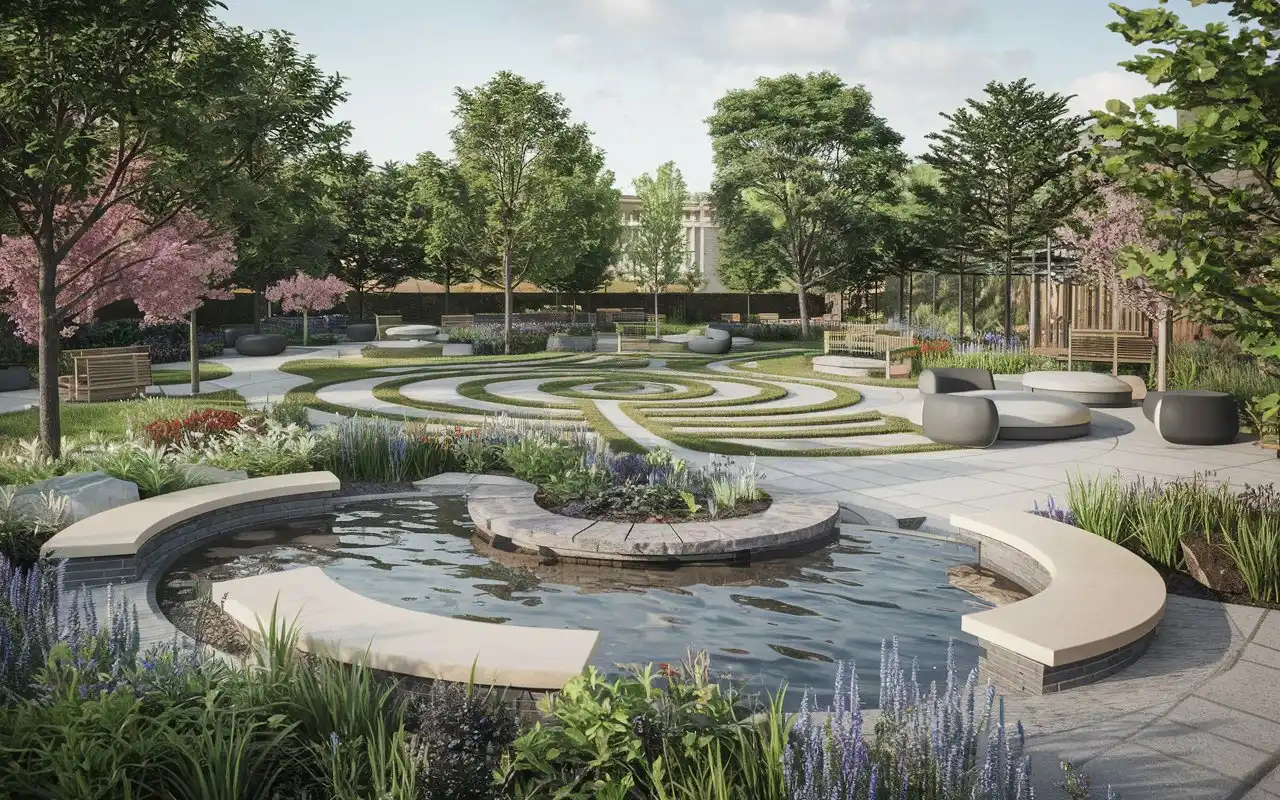
Multi-Seasonal Gardens: Enjoy Your Garden All Year Round
In 2025, gardens will be designed to offer beauty and functionality throughout all four seasons. 2025 garden design will stress multi-seasonal interest. Gardens should be vibrant in summer and offer color, structure, and texture in fall and winter.
Winter Interest Plants
To create year-round interest, 2025 garden design will focus on including plants that shine during the colder months. Evergreen shrubs, ornamental grasses, and winter-flowering plants, like hellebores and witch hazel, will keep the garden lively in the cold. Also, trees with striking bark, like dogwood and birch, will add interest with their colorful stems in winter.
Four-Season Hardscaping
Garden structures will also be designed to be enjoyed throughout the year. Fire pits, pergolas, and heaters will allow the use of outdoor spaces in cooler weather. Fountains can be adapted to add beauty when the garden is dormant. 2025 garden design will balance both plant and structural elements to create outdoor spaces that remain engaging year-round.
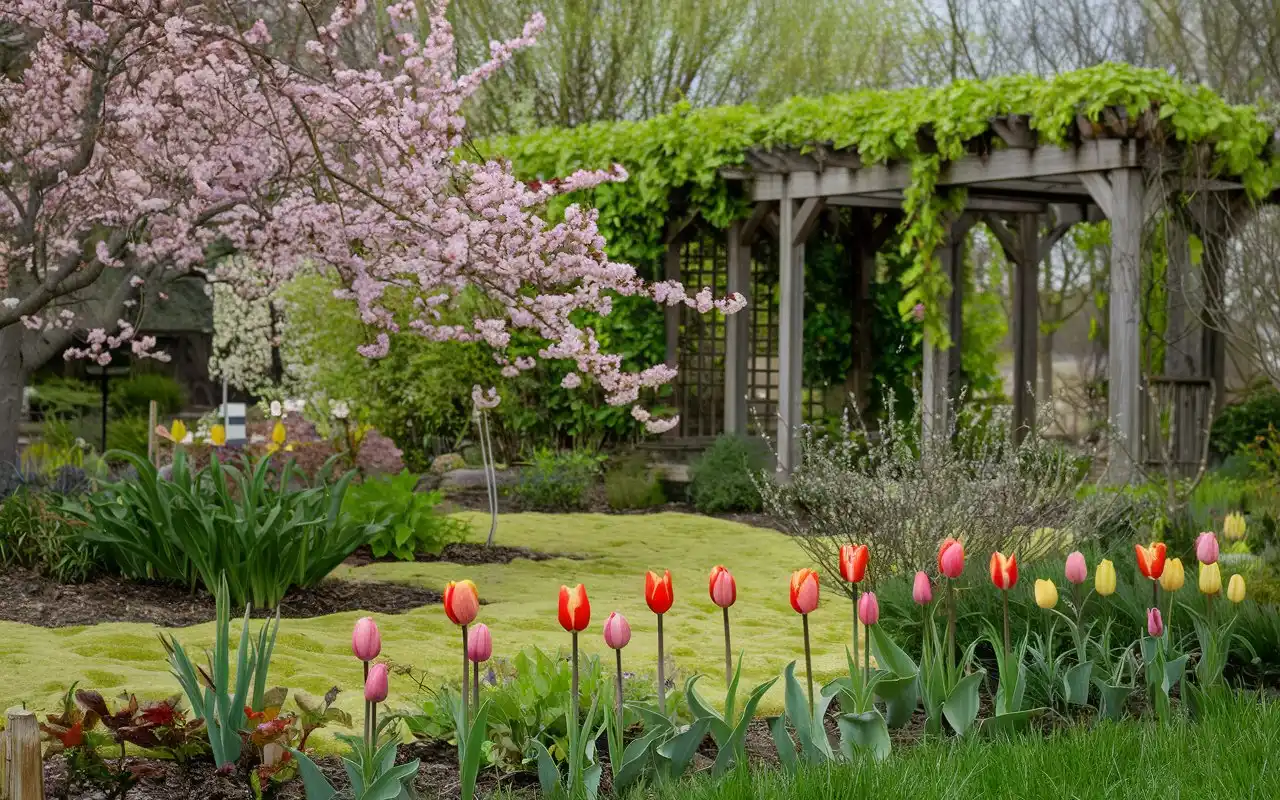
Eco-Friendly Garden Furniture: Sustainability in Every Detail
In keeping with the theme of sustainability, 2025 garden design will also extend eco-conscious choices to garden furniture and accessories. As consumers learn how their purchases affect the environment, demand for sustainable outdoor furniture will rise.
Recycled and Reclaimed Materials
In 2025, garden furniture made from recycled or reclaimed materials will be in high demand. Items like benches, tables, and planters crafted from repurposed wood, recycled plastic, or salvaged metal will be common in eco-friendly garden designs. These materials not only reduce the demand for new raw materials but also give a unique, rustic charm to outdoor spaces.
Sustainable Wood and Natural Fibers
Another key trend in 2025 garden design will be the use of sustainably sourced wood and natural fibers for outdoor furniture. Timber certified by groups like the FSC ensures that wood is harvested with minimal environmental impact. Also, furniture made from natural materials like bamboo or rattan will become more common. It will offer stylish and sustainable alternatives to synthetic options.
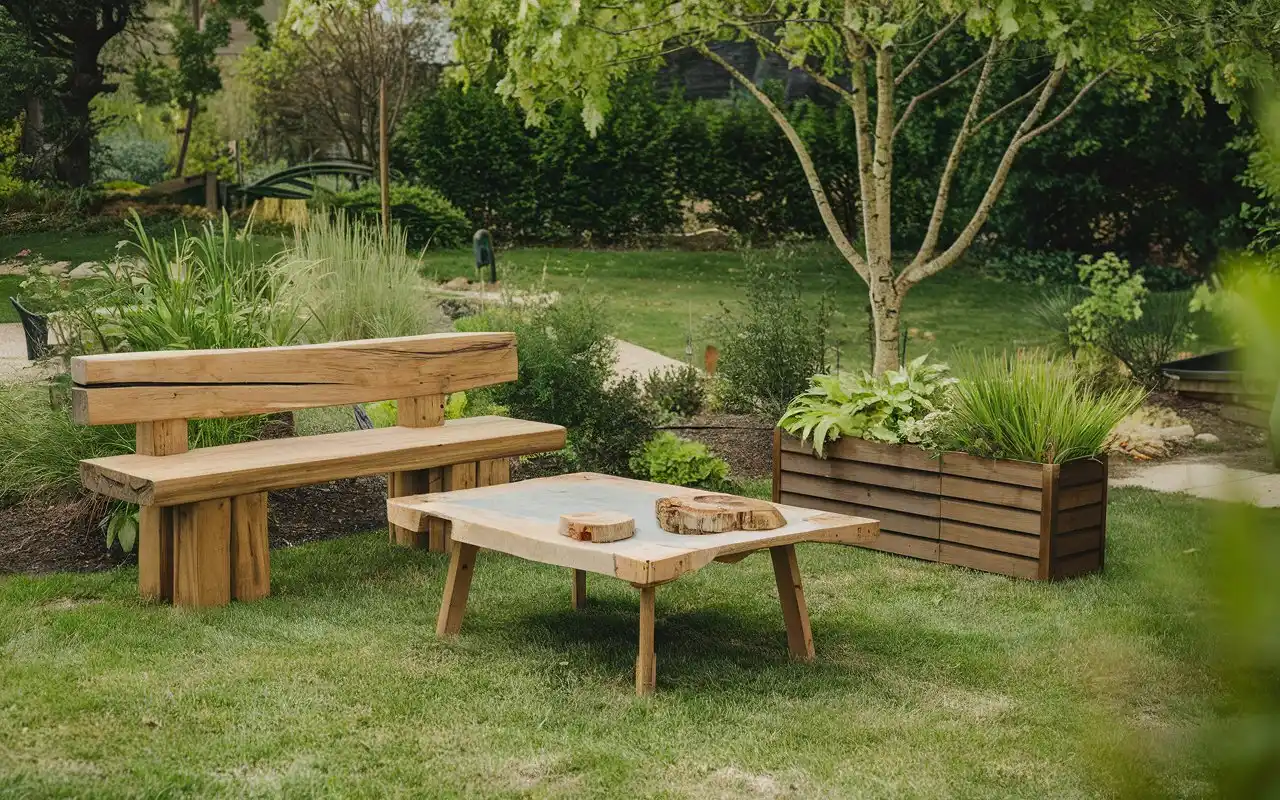
Water Features: Tranquility and Sustainability in 2025 Garden Design
Water features have been popular in gardens for a long time. In 2025, they will still be key to creating calm, inviting spaces. However, the focus will increasingly be on sustainability and efficiency.
Eco-Friendly Fountains and Ponds
In 2025 garden design, water features will be designed to use resources efficiently. Solar-powered fountains will be popular. They let homeowners enjoy the soothing sounds of running water without using electricity. Rainwater collection systems can also be added to ponds or fountains. This makes the water features self-sustaining and eco-friendly.
Natural Pools
For those looking to make a bigger statement, natural pools will be a growing trend in 2025 garden design. Natural pools use plants and filters to keep the water clean. Unlike traditional pools, they don’t use chlorine or chemicals. These pools blend into the landscape. They are a more eco-friendly and attractive alternative to conventional pools.
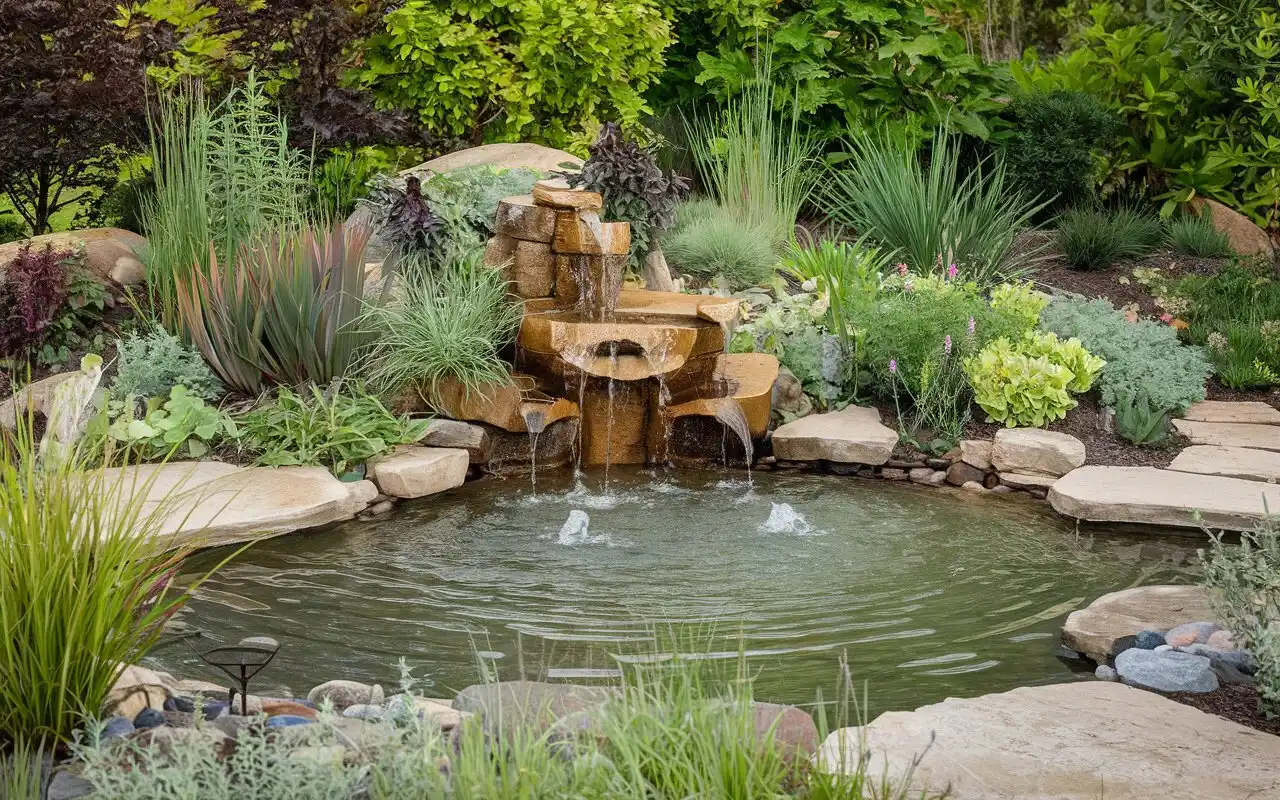
Edible Gardens: Grow Your Own Food in 2025
As awareness of food origins and the impact of farming grows, more people find growing their own food appealing. 2025 garden design will continue to incorporate edible gardens, providing homeowners with the opportunity to grow fresh, organic produce right at home.
Kitchen Gardens and Raised Beds
Raised beds will be a popular feature in 2025 garden design, especially for growing vegetables and herbs. These beds are easy to manage and can be customized to fit into any garden space, whether large or small. Raised beds provide fresh produce. They also improve soil and drainage. So, they are perfect for edible gardening.
Orchards and Fruit Trees
For those with more space, incorporating fruit trees and small orchards into the garden will be a trend in 2025 garden design. Trees like apples, pears, and cherries provide not only delicious fruit but also shade and structure to the garden. Even in smaller spaces, dwarf fruit trees can be planted in pots or small beds, allowing homeowners to enjoy homegrown fruit.
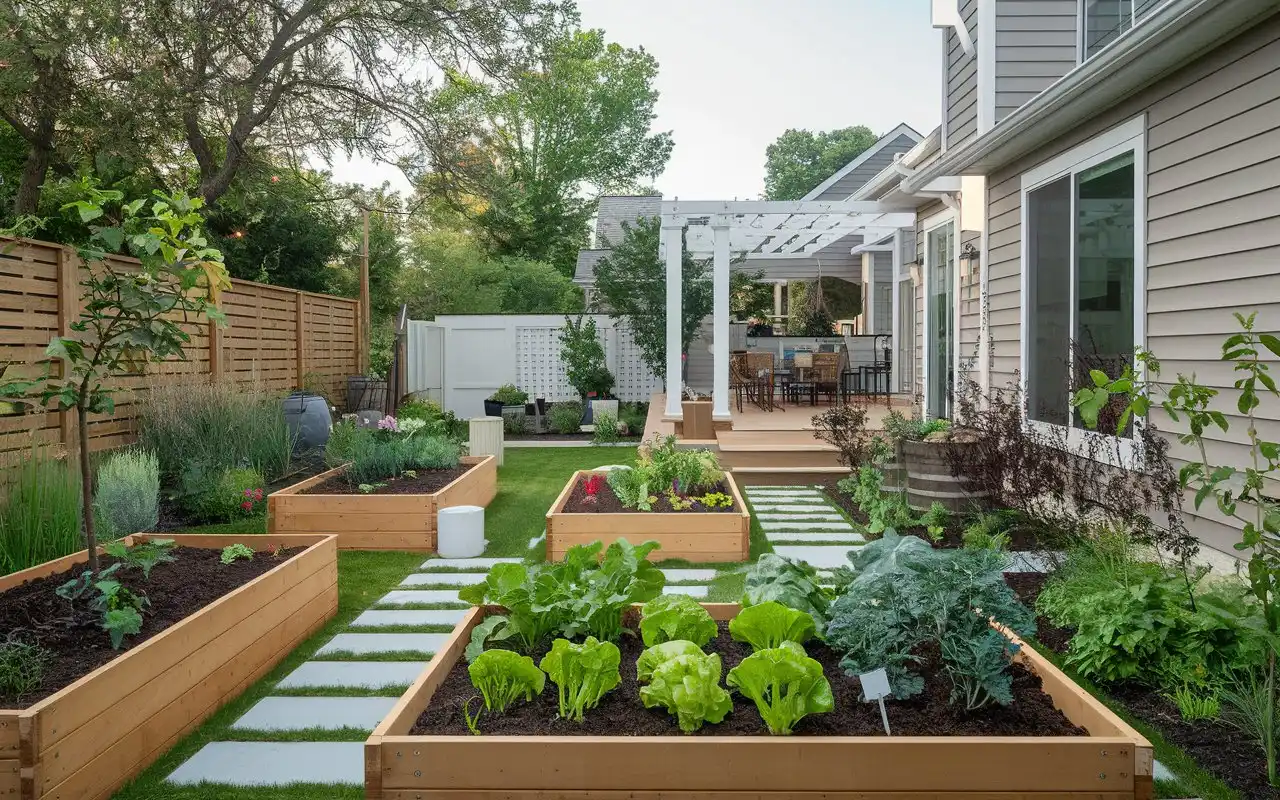
Minimalist Garden Design: Less is More
While some gardens will embrace bold colors and eclectic designs, others will take a more minimalist approach in 2025. 2025 garden design will see the rise of minimalist landscapes that emphasize simplicity, clean lines, and the use of natural materials.
Zen-Inspired Gardens
Minimalist gardens often draw inspiration from Japanese Zen gardens, which focus on simplicity, balance, and the use of natural elements like stone, sand, and water. In 2025 garden design, these principles will be applied to create calm, uncluttered spaces that encourage relaxation and contemplation. Carefully placed rocks, gravel pathways, and minimalist plantings will create a sense of harmony and tranquility.
Monochromatic Color Schemes
In line with minimalist design, 2025 garden design will feature monochromatic color schemes that rely on different shades of a single color to create depth and interest. For example, a garden designed with varying shades of green can evoke a sense of calm and continuity while remaining visually interesting through the use of different textures and plant forms.

Regenerative Gardens: Giving Back to the Earth
While sustainable gardening has become mainstream, 2025 garden design will push the envelope even further with the concept of regenerative gardening. This goes beyond sustainability to actively improve the environment by rebuilding soil health, increasing biodiversity, and capturing carbon.
Regenerative Landscaping Practices
Regenerative gardens focus on creating landscapes that restore ecosystems rather than merely maintaining them. Techniques such as no-till gardening, mulching, and cover cropping will become more common as gardeners aim to enhance soil fertility, reduce erosion, and improve water retention. In urban environments, regenerative gardens can help combat the heat island effect by increasing vegetation cover and improving air quality.
Carbon Sequestration Gardens
As the world continues to focus on reducing carbon emissions, gardens will play a key role in carbon sequestration. In 2025 garden design, certain plants, particularly deep-rooted perennials and trees, will be selected for their ability to absorb and store carbon dioxide. By planting species that draw carbon from the atmosphere and store it in the soil, homeowners can contribute to the fight against climate change while creating lush, green environments.
Perennial Food Systems
Another aspect of regenerative gardening is the shift towards perennial food systems. Unlike annual crops that need to be replanted each year, perennials like fruit trees, berry bushes, and nut-bearing plants continue to produce for many years without the need for replanting. In 2025 garden design, the inclusion of these plants will not only provide food but also help build soil structure and support local wildlife.
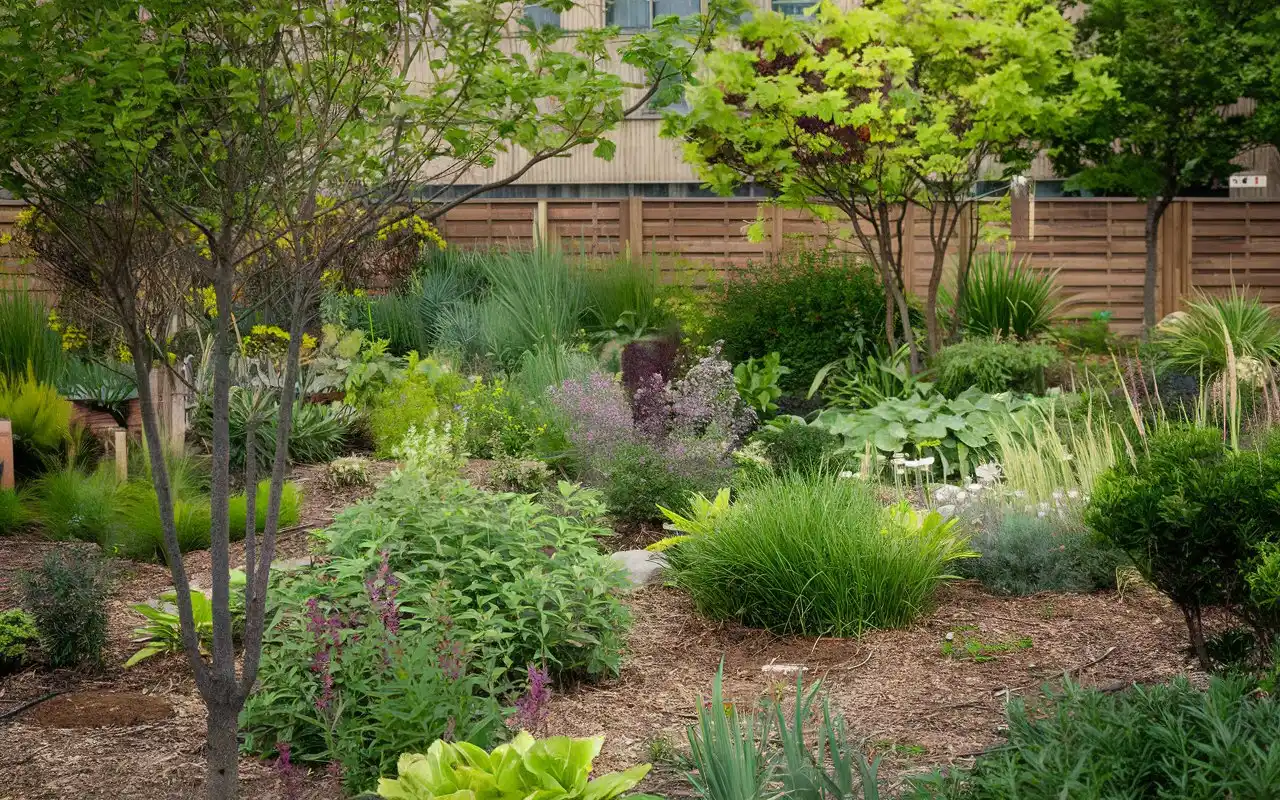
Natural Play Areas: Family-Friendly Garden Design for 2025
For families with children, 2025 garden design will offer creative and natural solutions for outdoor play. Instead of relying on traditional plastic playground equipment, gardens will incorporate nature-inspired play areas that encourage imaginative and active play while blending seamlessly into the landscape.
Nature Playgrounds
Nature-based playgrounds use elements like logs, boulders, tree stumps, and sand to create a play environment that feels organic and engaging. These spaces encourage children to explore, climb, and interact with natural materials, fostering creativity and a deeper connection with nature. In 2025 garden design, nature playgrounds will be designed to stimulate physical and cognitive development while providing safe, adventurous spaces for kids.
Sensory Play Gardens
In line with the trend of biophilic design, sensory gardens designed for children will become popular in 2025. These gardens are created with the intention of stimulating all the senses through various textures, colors, sounds, and scents. Features like water elements, fragrant plants, and tactile materials such as pebbles or sand will make sensory gardens a hit for families. These spaces will offer both play and learning opportunities for children, creating a multi-sensory experience that fosters growth and exploration.

Garden Art and Sculptural Elements: Personalizing 2025 Garden Design
Incorporating art into the garden is a growing trend, and 2025 garden design will take this to new heights by integrating bespoke garden art, sculptures, and statement pieces that reflect personal style and creativity.
Sculptural Focal Points
Garden sculptures have long been used to add personality and interest to outdoor spaces, but in 2025, these elements will become more prominent. Whether it’s a large stone sculpture, a metal installation, or a modern abstract piece, these art objects will serve as focal points that draw the eye and create conversation starters. Garden art will be carefully chosen to complement the overall design, enhancing the mood and character of the space.
Interactive Art Installations
In line with the trend of engaging the senses, 2025 garden design will feature interactive art installations that invite interaction from visitors. This could include wind-activated sculptures, kinetic art pieces that move with the breeze, or sound-based installations that produce gentle melodies when touched or when the wind blows through them. These dynamic elements will create a more immersive and engaging garden experience, making outdoor spaces both visually and experientially stimulating.
Functional Art Pieces
Art in 2025 gardens won’t just be decorative—it will also serve a practical purpose. Designers will incorporate functional art pieces, such as sculptural water fountains, artistic benches, or creative lighting fixtures, that blend form and function seamlessly. These dual-purpose elements will not only elevate the aesthetic of the garden but also enhance its functionality.
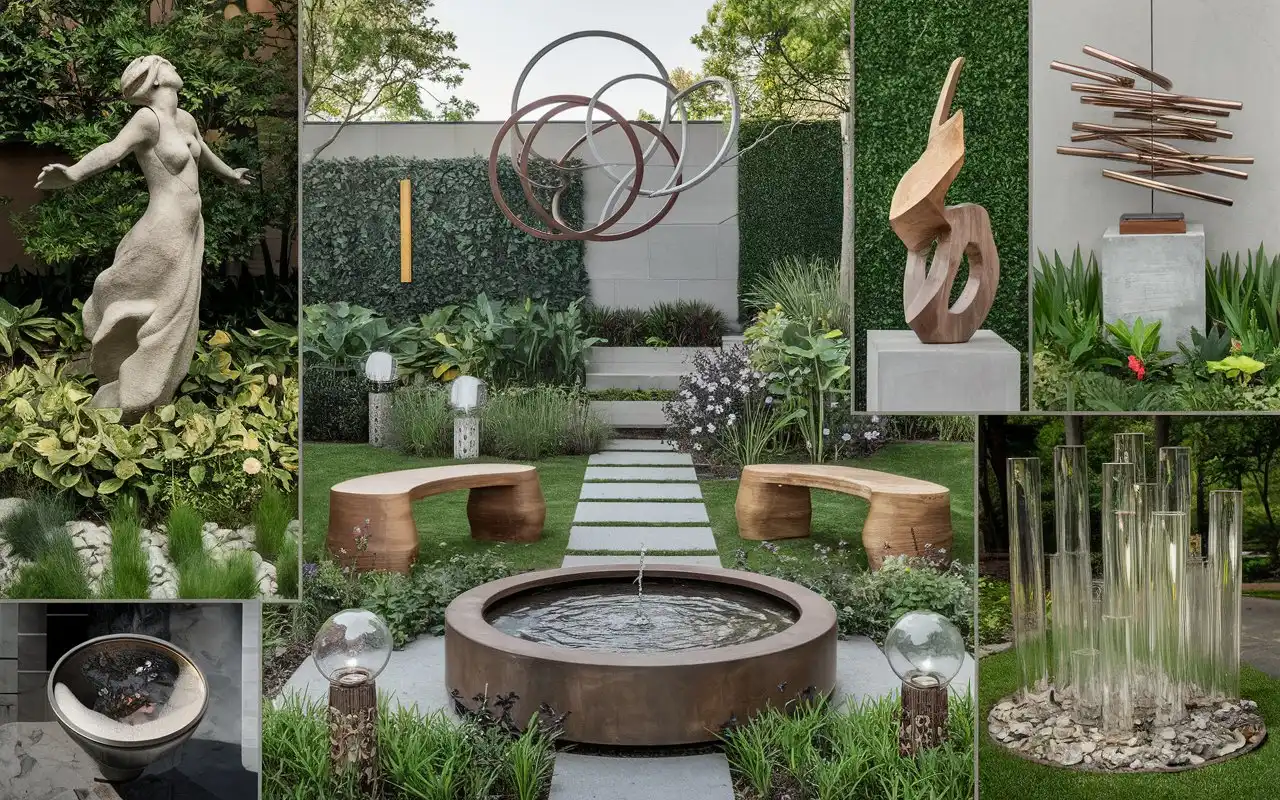
Conclusion
The future of outdoor spaces is brimming with creativity, innovation, and environmental responsibility. 2025 garden design reflects our evolving relationship with nature and technology, as well as our increasing awareness of sustainability and well-being. From high-tech smart gardens and biophilic design principles to minimalist aesthetics and regenerative gardening practices, the trends shaping 2025 gardens offer diverse possibilities for transforming outdoor spaces into personal sanctuaries.
As the garden design landscape continues to evolve, homeowners and gardeners alike are being encouraged to think outside the box, creating gardens that are both beautiful and functional, while prioritizing sustainability and wellness. Whether you’re drawn to the idea of integrating technology into your garden, designing a wildlife-friendly sanctuary, or creating a year-round, multi-seasonal landscape, the garden trends of 2025 provide endless opportunities for innovation and personalization.
With these trends in mind, now is the perfect time to start planning your own outdoor transformation. By embracing the principles of 2025 garden design, you can create a space that not only meets your practical needs but also enhances your connection with nature, supports biodiversity, and contributes to a more sustainable future.

